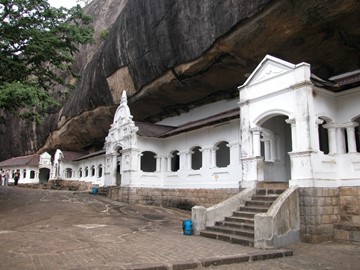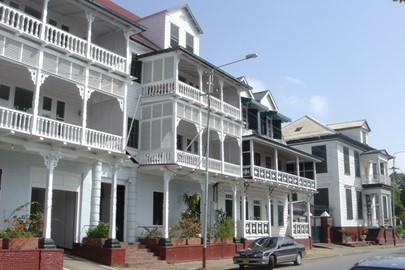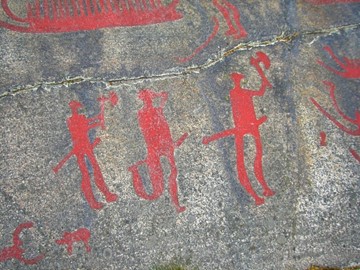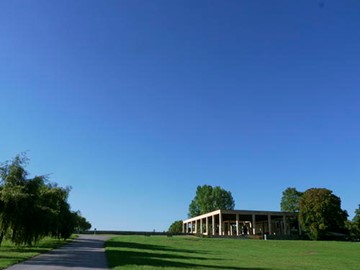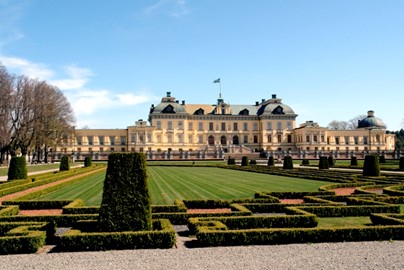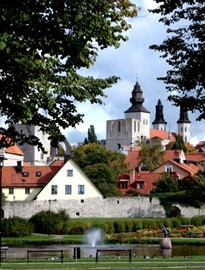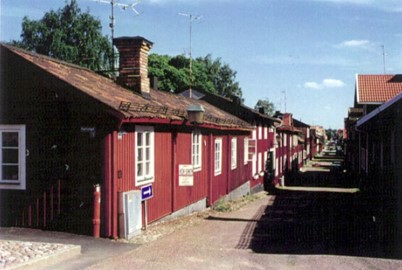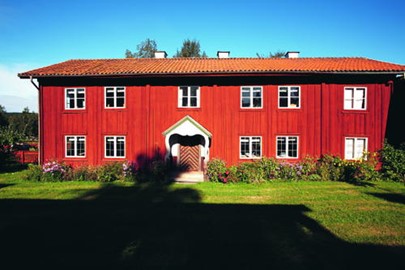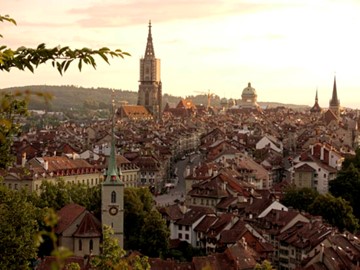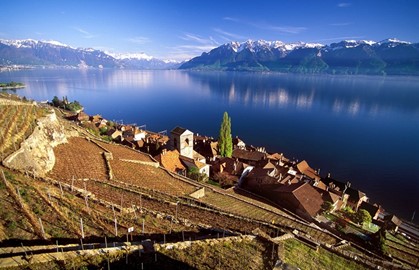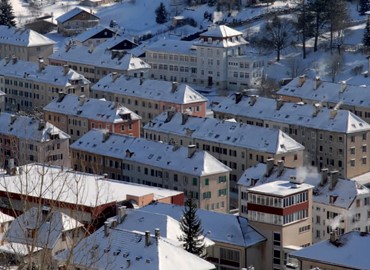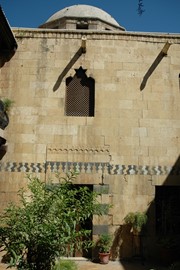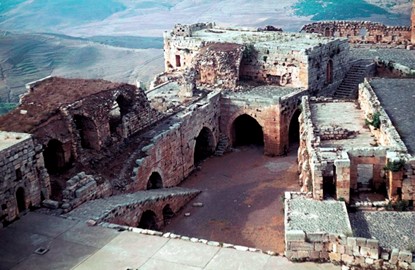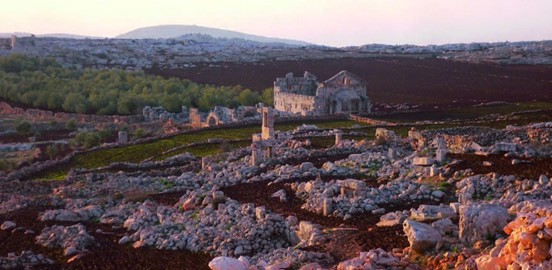category :: cultural
Golden Temple of Dambulla
The Golden Temple of Dambulla, a UNESCO World Heritage site in Sri Lanka, is a remarkable cave temple complex dating back to the 1st century BCE. This sacred site features five caves adorned with over 150 statues of Buddha, intricate murals, and ancient rock paintings that showcase a blend of religious and artistic heritage. The temple, also known as Dambulla Rock Temple, served as a refuge for King Valagamba during his exile and remains a significant pilgrimage destination today. Its well-preserved rock-cu... Read More
Gebel Barkal
Gebel Barkal, a UNESCO World Heritage site in Sudan, is a small mountain revered for its historical and cultural significance. It served as a royal cemetery during the ancient Kingdom of Kush and features well-preserved pyramids, temples, and palaces dating back to the 15th century BCE. The site is also notable for its association with the Egyptian god Amun, whose temple lies at the mountain's base, reflecting its role as a key religious center in antiquity. Today, it stands as a testament to the region's r... Read More
Meroe
The Island of Meroe, a UNESCO World Heritage site in Sudan, is an ancient archaeological treasure that served as the heartland of the Kingdom of Kush from the 8th century BC to the 4th century AD. This semi-desert landscape features the royal city of Meroe with its pyramids, temples, and water management systems, alongside the religious sites of Naqa and Musawwarat es Sufra. Recognized in 2011, it showcases a blend of local Kushite culture with influences from Egypt, Greece, and Rome, reflecting its histori... Read More
Paramaribo
Paramaribo, the capital of Suriname, is a UNESCO World Heritage site renowned for its well-preserved colonial architecture, reflecting a unique blend of Dutch, British, and French influences from the 17th and 18th centuries. The city’s historic inner center features wooden buildings, including the iconic Saint Peter and Paul Cathedral, showcasing intricate craftsmanship. Its cultural significance stems from its role as a trading hub in the Caribbean, with a diverse heritage shaped by indigenous, African, an... Read More
Birka and Hovgarden
Birka and Hovgården, a UNESCO World Heritage site in Sweden, form a remarkable archaeological complex showcasing the Viking Age's extensive trading networks across Europe. Located on two neighboring islands in Lake Mälaren, Birka was a bustling mercantile town from the 8th to 10th centuries, known for its role as a key trading hub and the site of Sweden’s first Christian congregation, founded in 831 by St. Ansgar. Hovgården, the nearby royal estate, governed the region and features monumental mounds, a rune... Read More
Engelsberg Ironworks
Engelsberg Ironworks, a UNESCO World Heritage site in Sweden, is a remarkably preserved industrial complex established in 1681. It became one of the world’s most advanced ironworks between 1700 and 1800, producing high-quality iron that solidified Sweden’s leadership in the industry during the 17th and 18th centuries. The site features intact buildings, including a blast furnace, forge, and workers’ residences, showcasing historical technology and architecture. Operations ceased in 1919, and it was designat... Read More
Rock Carvings in Tanum
The Rock Carvings in Tanum, a UNESCO World Heritage site in Sweden, are an exceptional collection of Bronze Age petroglyphs dating back to 1800–500 BCE. These ancient artworks, etched into smooth rock surfaces, depict a vivid array of human figures, animals, boats, and weapons, offering a glimpse into the daily life, beliefs, and rituals of prehistoric communities. Recognized for their outstanding universal value, the carvings provide a remarkable archaeological record of northern Europe's early societies.
Skogskyrkogarden
Skogskyrkogården, a UNESCO World Heritage site in Sweden, is a remarkable cemetery designed by architects Gunnar Asplund and Sigurd Lewerentz between 1917 and 1920. Known for its harmonious blend of nature and modernist architecture, it features serene landscapes, minimalist chapels, and a tranquil atmosphere that reflects Scandinavian design principles. The site serves as both a functional burial ground and a cultural landmark, attracting visitors for its historical significance and peaceful beauty.
Drottningholm
The Royal Domain of Drottningholm, a UNESCO World Heritage site in Sweden, is a well-preserved historical ensemble featuring a 17th-century palace, a picturesque theater, and a Chinese Pavilion. Originally built as a royal summer residence, it showcases Baroque architecture and beautifully landscaped gardens, reflecting the grandeur of European royal estates. Today, it serves as a residence for the Swedish royal family while remaining open to the public as a cultural treasure, offering insight into Sweden’s... Read More
Visby
The Hanseatic Town of Visby, a UNESCO World Heritage site in Sweden, is a remarkably preserved medieval trading center on the island of Gotland. Its 13th-century ramparts, over 200 warehouses, and historic churches, like the Sankta Maria Cathedral, showcase its past as a key Baltic Sea hub within the Hanseatic League. The town's cobblestone streets and well-maintained ruins offer a glimpse into its prosperous history, making it a standout example of Northern European medieval architecture and urban planning... Read More
Gammelstad
Gammelstad, a UNESCO World Heritage site in Sweden, is a well-preserved example of a traditional Scandinavian church village. Established around a 15th-century stone church, it features over 400 wooden cottages historically used by rural parishioners for overnight stays during religious services and gatherings. This unique settlement reflects medieval customs and the region’s cultural heritage, earning its designation for its historical significance and architectural authenticity.
Karlskrona
The Naval Port of Karlskrona, a UNESCO World Heritage site in Sweden, is a remarkably preserved late-17th-century naval city founded in 1680 by King Karl XI. Designed with a grid layout and Baroque influences, it served as a strategic base for Sweden’s navy, featuring intact original structures like fortifications, a shipyard, and residential areas. Its historical significance lies in its role as a model for European naval planning, blending military and civilian functions seamlessly. Today, it remains an a... Read More
Southern Oland
The Agricultural Landscape of Southern Öland, a UNESCO World Heritage site in Sweden, showcases a unique limestone plateau shaped by human activity for over 5,000 years. Its distinct features include ancient villages, arable fields, and grazing lands like the Stora Alvaret, reflecting a remarkable adaptation to the island's geology and climate. This living agrarian landscape preserves prehistoric settlements, medieval land divisions, and a rich biodiversity, offering a glimpse into a continuous cultural tra... Read More
Falun Mining Area
This UNESCO World Heritage site in Sweden encompasses a historic copper mine that operated for over a millennium, from the 10th century until 1992, significantly shaping the region’s industrial and cultural landscape. At its peak in the 17th century, it supplied two-thirds of Europe’s copper, influencing global mining technology and funding Sweden’s military endeavors. The site includes the expansive Great Pit, a result of a 1687 collapse, alongside a well-preserved 17th-century planned town, miners’ cottag... Read More
Grimeton Radio Station
Grimeton Radio Station, a UNESCO World Heritage site in Sweden, is a remarkably preserved early 20th-century long-wave radio station, operational since 1924. Built under the direction of engineer Ernst Alexanderson, it showcases pioneering technology with its massive Alexanderson alternator, capable of transatlantic communication. Today, it serves as a historical monument and museum, offering insight into the development of global telecommunications. Its unique industrial architecture and functional equipme... Read More
Farmhouses of Halsingland
The Farmhouses of Hälsingland, a UNESCO World Heritage site, are a collection of seven well-preserved timber farmhouses from the 19th century, showcasing a unique blend of rural architecture and folk art. Built by prosperous farmers, these homes feature elaborately decorated interiors with vibrant paintings and stencils, reflecting influences from Baroque and Rococo styles. Designated in 2012, they represent the peak of a centuries-old timber-building tradition and the social status of their owners. Many ar... Read More
Berne
The Old City of Berne, a UNESCO World Heritage site in Switzerland, is a well-preserved medieval town founded in the 12th century. Its sandstone buildings, arcaded streets, and historic fountains, including the iconic Zytglogge clock tower, showcase a unique blend of architectural charm and cultural significance. The city's layout, largely unchanged since the Middle Ages, reflects its rich history as a political and economic center. Today, it remains a vibrant testament to Switzerland's heritage, attracting... Read More
Abbey of St Gall
The Abbey of St Gall, a UNESCO World Heritage site in Switzerland, is a historic Benedictine monastery founded in the 8th century, renowned for its exceptionally preserved medieval architecture and cultural significance. Its Baroque cathedral and library, housing one of the world’s oldest collections of manuscripts, highlight its role as a center of learning and spirituality. The site exemplifies Carolingian-era design and remains a testament to centuries of European religious and intellectual history.
Benedictine Convent of St John
The Benedictine Convent of St John at Müstair, a UNESCO World Heritage Site in Switzerland, is an exceptional example of Carolingian-era monastic architecture, founded around 775, possibly by Charlemagne. Renowned for housing the country’s most significant collection of early medieval figurative murals from around 800, alongside Romanesque frescoes and stuccoes, it reflects over 1,200 years of religious and artistic history. The convent remains an active Benedictine community, blending spiritual life with c... Read More
Bellinzone
The Three Castles, Defensive Wall, and Ramparts of the Market-Town of Bellinzona form a UNESCO World Heritage site showcasing a remarkable medieval fortification system. This well-preserved ensemble includes three imposing castles—Castelgrande, Montebello, and Sasso Corbaro—linked by extensive defensive walls and ramparts. Designed to control strategic trade routes, the complex reflects a blend of architectural styles from the 13th to 15th centuries. Its historical significance and structural integrity make... Read More
Lavaux, Vineyard Terraces
The Lavaux Vineyard Terraces, a UNESCO World Heritage site in Switzerland, showcase a stunning landscape of steep, terraced vineyards cascading down to a serene lakeside. This historic wine-growing region, dating back to the 11th century, reflects centuries of human ingenuity in cultivating the land. The picturesque terraces, dotted with charming villages and ancient stone walls, produce renowned wines while preserving a unique cultural and natural legacy.
La Chaux de Fonds and Le Locle
La Chaux-de-Fonds and Le Locle, located in Switzerland, form a UNESCO World Heritage site renowned for their unique urban planning and watchmaking heritage. These towns exemplify a harmonious blend of residential and industrial spaces, designed in the 19th century to support the burgeoning watch industry. Their grid-like layouts, with wide streets and neoclassical buildings, reflect an innovative approach to town planning tailored to the needs of skilled artisans. Today, they stand as living testimonies to ... Read More
Aleppo
The Ancient City of Aleppo, a UNESCO World Heritage site in Syria, is renowned for its rich history dating back to the 2nd millennium BC, serving as a key trading hub along the Silk Road. Its well-preserved architecture includes a vast citadel, medieval mosques, madrasas, and souqs, showcasing a blend of Arab, Persian, and Islamic influences. Despite suffering damage from conflict, it remains a testament to the region’s cultural and historical significance, with ongoing efforts to restore its iconic landmar... Read More
Crac des Chevaliers
Crac des Chevaliers, a UNESCO World Heritage site in Syria, is a remarkably preserved medieval castle built by the Knights Hospitaller in the 12th century. Renowned for its impressive Crusader architecture, the fortress features robust stone walls, towers, and intricate defensive systems, showcasing the military engineering of its time. It served as a key stronghold during the Crusades, symbolizing the power and influence of the Christian military orders in the region. Today, it stands as a testament to Syr... Read More
Ancient Villages of Northern Syria
The Ancient Villages of Northern Syria, a UNESCO World Heritage site, consist of around 40 well-preserved settlements from the 1st to 7th centuries, offering a remarkable glimpse into rural life during Late Antiquity and the Byzantine period. Abandoned between the 8th and 10th centuries, these villages feature intact remains of dwellings, churches, pagan temples, and bathhouses, showcasing the transition from Roman paganism to Byzantine Christianity. Recognized in 2011, the site highlights the inhabitants' ... Read More
